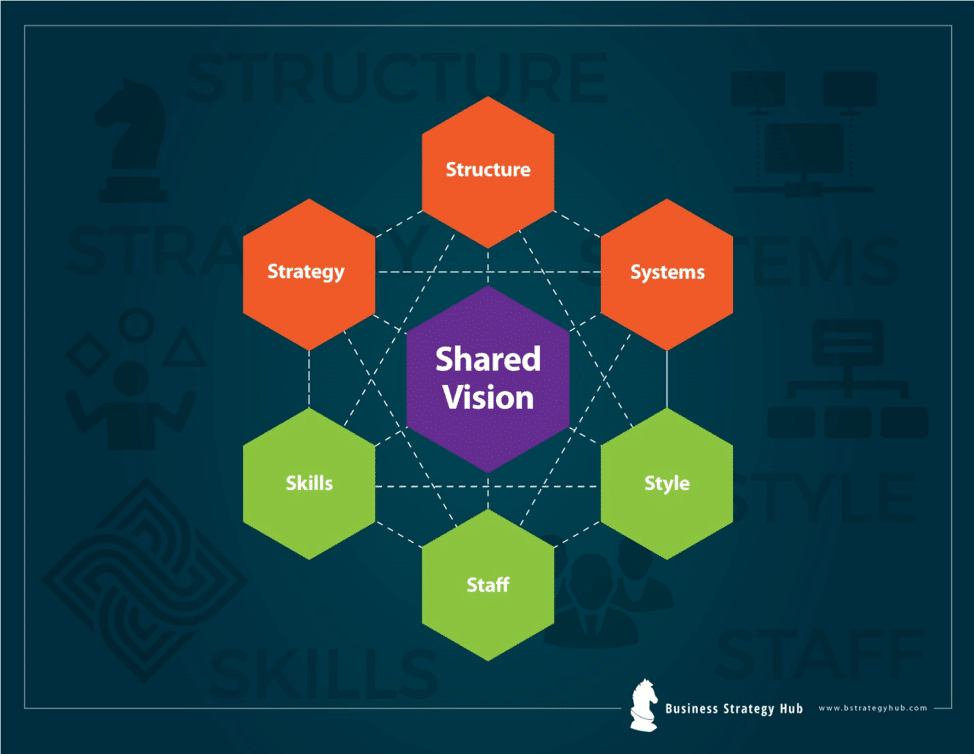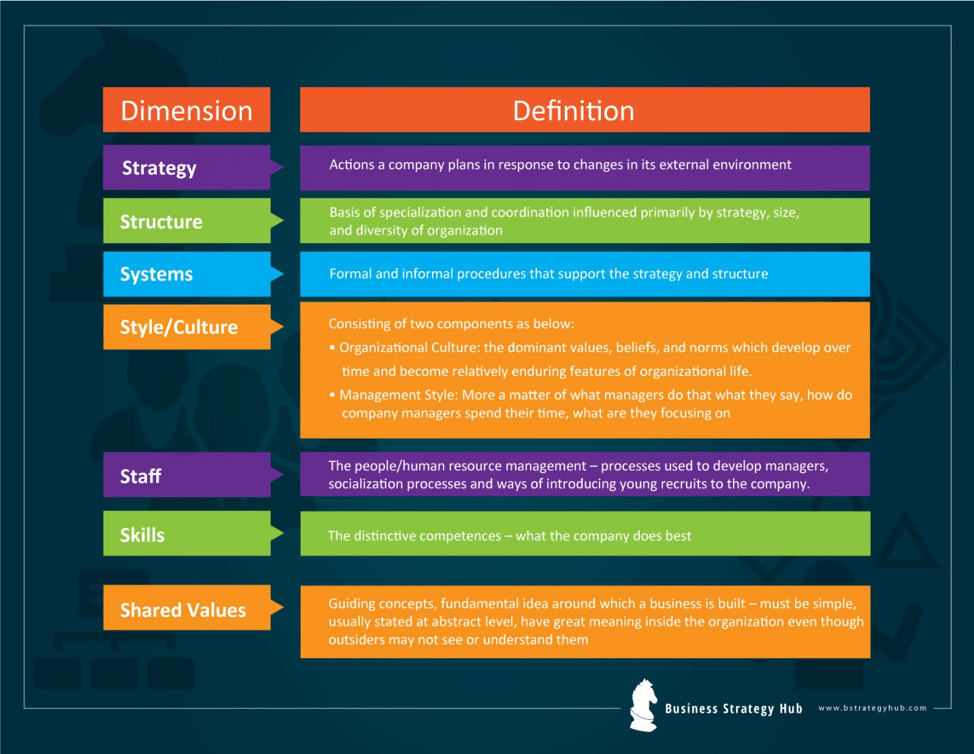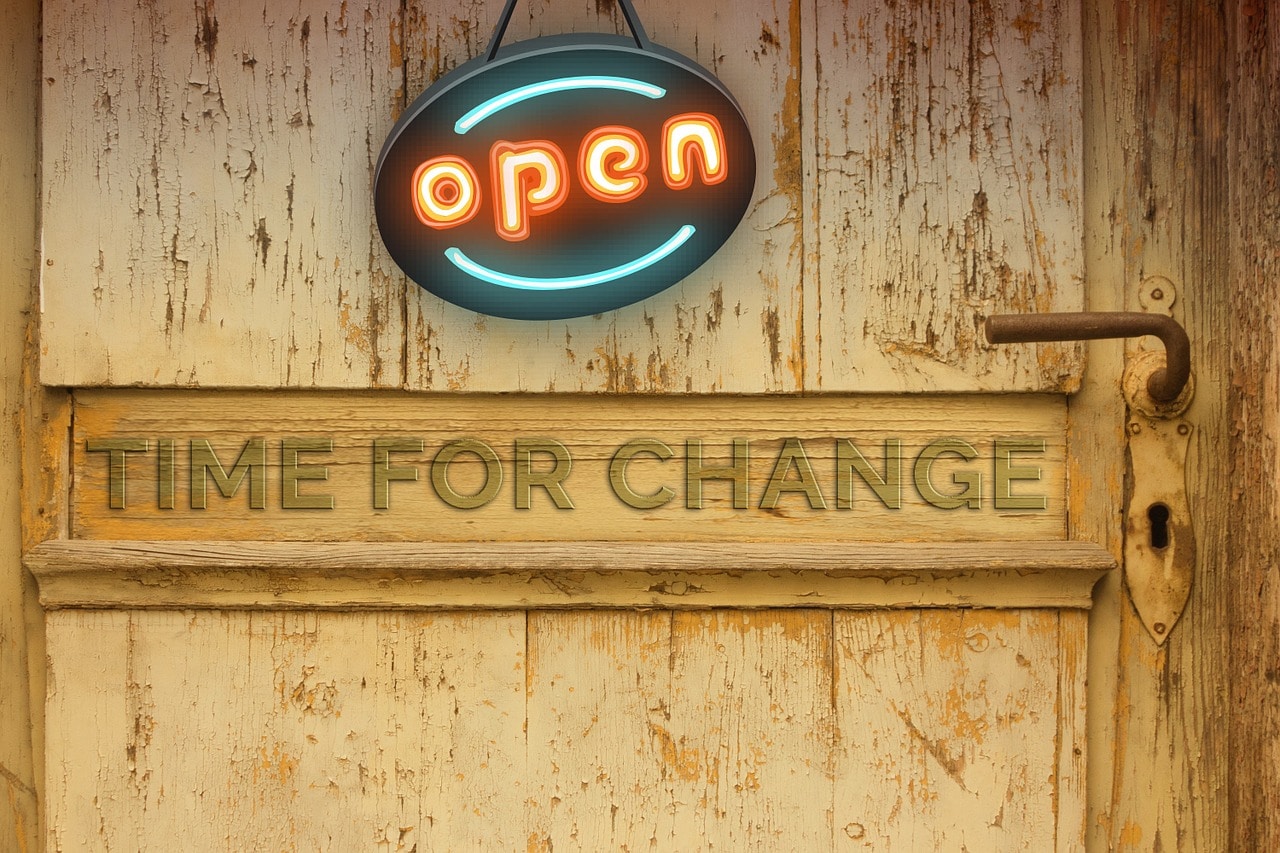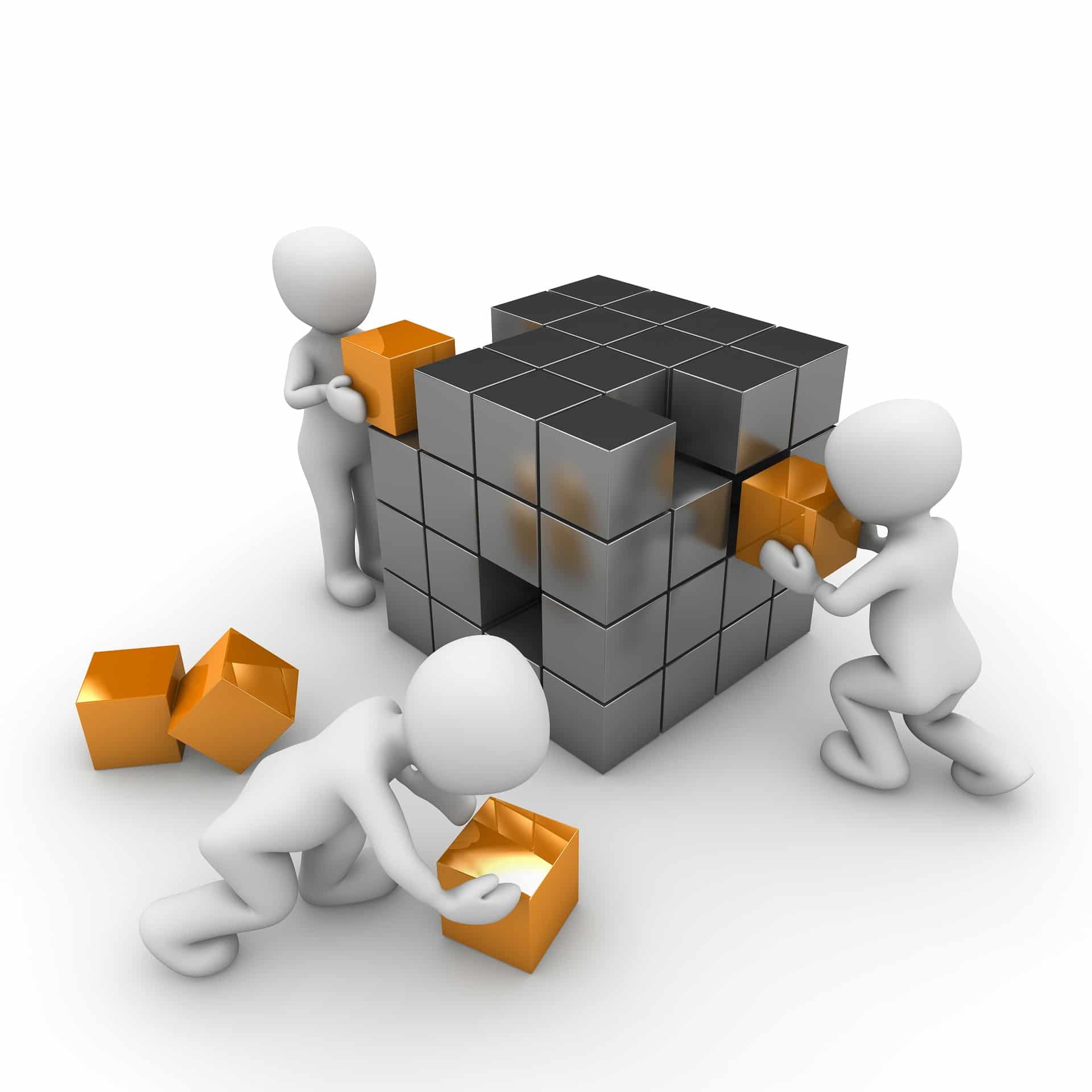Model Name : 7S Model
Creator : McKinsey
Year : 1982
Purpose : To address the role of coordination, instead of structure, in organizational effectiveness.
While some models of business effectiveness are considered (or not considered) to be smart at the time in question, one model that has continued to stay in fashion and considered effective since its conception is the “McKinsey 7S Framework Model”.
The basic principle of it is that there are 7 internal facets of a company that should be united to succeed. This model can be used in a wide range of circumstances where an alignment viewpoint is valuable.
The 7S framework will help you:
• Boost organizational performance
• Align the processes and departments during an acquisition or merger
• Evaluate the possible effects of future changes within an organization
• Identify how to implement a planned strategy in the best way
The model can be applied to features of a project as well as a team. The issues of alignment apply, regardless of how you decide to define the scope of the realm that you examine.
The Seven Elements

The seven interdependent factors that are involved in the 7S framework are classified as either “soft” or “hard” elements:
What are the soft elements of Mckinsey 7s model?
Soft elements include :
- shared values
- staff
- skills
- style
These elements are less tangible; they can be difficult to describe and are more influenced by culture.
What are the Hard elements of Mckinsey 7S Model?
On the other hand, hard elements include:
- strategy
- systems
- structure
They are easier to define or determine and can be easily influenced by the management.
Despite the significant difference between them, both kinds of elements are interdependent on each other and are equally significant for the success of an organization.
Let’s shine a spotlight on each of the elements separately.

Image Source: https://www.semanticscholar.org
Hard Elements
Strategy:
It is a plan that is developed to sustain and shape your competitive advantage over the competition.
To analyze your existing situation first, and then repeat the enactment for your projected situation, consider the following questions:
• What is our business strategy?
• How do we aim to attain our goals?
• Can we handle the competitive pressure?
• How do we deal with the changes in customer demands?
• Is our strategy suitable for currentenvironmental issues?
Structure:
It is the way a company is structured and a track of who reports to whom (hierarchy).
To understand your situation in terms of this model, consider the following questions:
• What is the hierarchy?
• How is the team/organization divided?
• How do various departments harmonize undertakings?
• Is controlling and decision making decentralized or centralized? In both cases, is this as it should be?
• How do the employees align and organize themselves?
• Where are the lines of communication?
Systems:
It is the daily procedures and activities that employees engage in to get the task done.
Questions to consider:
• What are the central systems that drive the company?
• Where are the controls?
• How are the controls monitored and evaluated?
• What internal processes and rules do the staff members employ to keep on track?
Soft Elements
Shared Values:
previously known as “superordinate goals,” these are the core values of the organization that are demonstrated in the general work ethic and the corporate culture.
Questions to consider:
• What is the corporate culture?
• What are the core values? How strong are they?
• What are the central values that the organization was built on?
Style:
It is the style of leadership adopted. Questions to consider:
• How participative is the management style?
• How effective is that management?
• Are employees likely to be cooperative or competitive?
• Are the teams just nominal groups or are they real teams functioning within the company?
Staff:
the employees and their general competences. Questions to ask:
• What specializations or positions are signified within the team?
• What positions need to be filled?
• Are there gaps in requisite capabilities?
Skills:
the genuine competencies and skills of the staff working for the organization. Questions to consider:
• What are the strongest skills represented within the team?
• Are there any skills gaps?
• What is the team or company known for doing well?
• Do the existing employees have the capacity to do this job?
• How are the skills of employees monitored and assessed?
How to Use the Mckinsey 7S Model?
Now that you know the 7 elements of the model, how can you use it?
The model is based on a concept that these seven elements need to be aligned with each other and should be mutually reinforcing to improve organizational performance.
Hence, it can be used to help determine elements that need to be realigned to enhance or maintain the performance during other kinds of change – organizational merger, new processes, new systems, restricting, change of leadership, etc.
Whatever the kind of change, McKinsey’s 7S framework can be used to comprehend how the elements in an organization are interlinked. Therefore, ascertain that the eclectic impact of changes made in one zone is taken into consideration.
The model can be used to evaluate the present situation (point A), planned impending situation (point B) and to determine the inconsistencies and gaps between them.
Once you reach the preferred endpoint, it is then a matter of adjusting the 7 elements to ascertain that the company works well and efficiently.
Sounds simple, doesn’t it? But in actuality, changing your organization is not as simple as it sounds. There are plenty of methodologies as well as books dedicated to just analyzing organizational strategy, and enhancing and maintaining the performance.
This framework helps you ask the right questions; however, it won’t provide you with answers to all your questions. What do you need then to get all your answers? Well, definitely the knowledge, experience, and skills.
Below are the steps that you need to go through while checking the alignment between the elements:
1. Begin with Shared Values: Are they stable with your strategy, structure as well as systems? Determine where these changes need to be made.
2. Then look at the hard elements. How perfectly they support each other? If not, what is that needs to be changed?
3. Look at the soft elements last. Does one element support another? Do they back the hard elements? If not, where do the changes need to be made?
To Wrap Up
You will have to use an iterative process while you adjust and align the elements and then re-examine how that influences other elements and their alignment.
The end result of enhanced organizational performance will be well worth conducting this lengthy process.
References & more information
Hanafizadeh, P., & Ravasan, A.Z. (2011). A McKinsey 7S Model-Based Framework for ERP Readiness Assessment. IJEIS, 7, 23-63.
Tell us what you think? Did you find this article interesting?
Share your thoughts and experiences in the comments section below.












Add comment